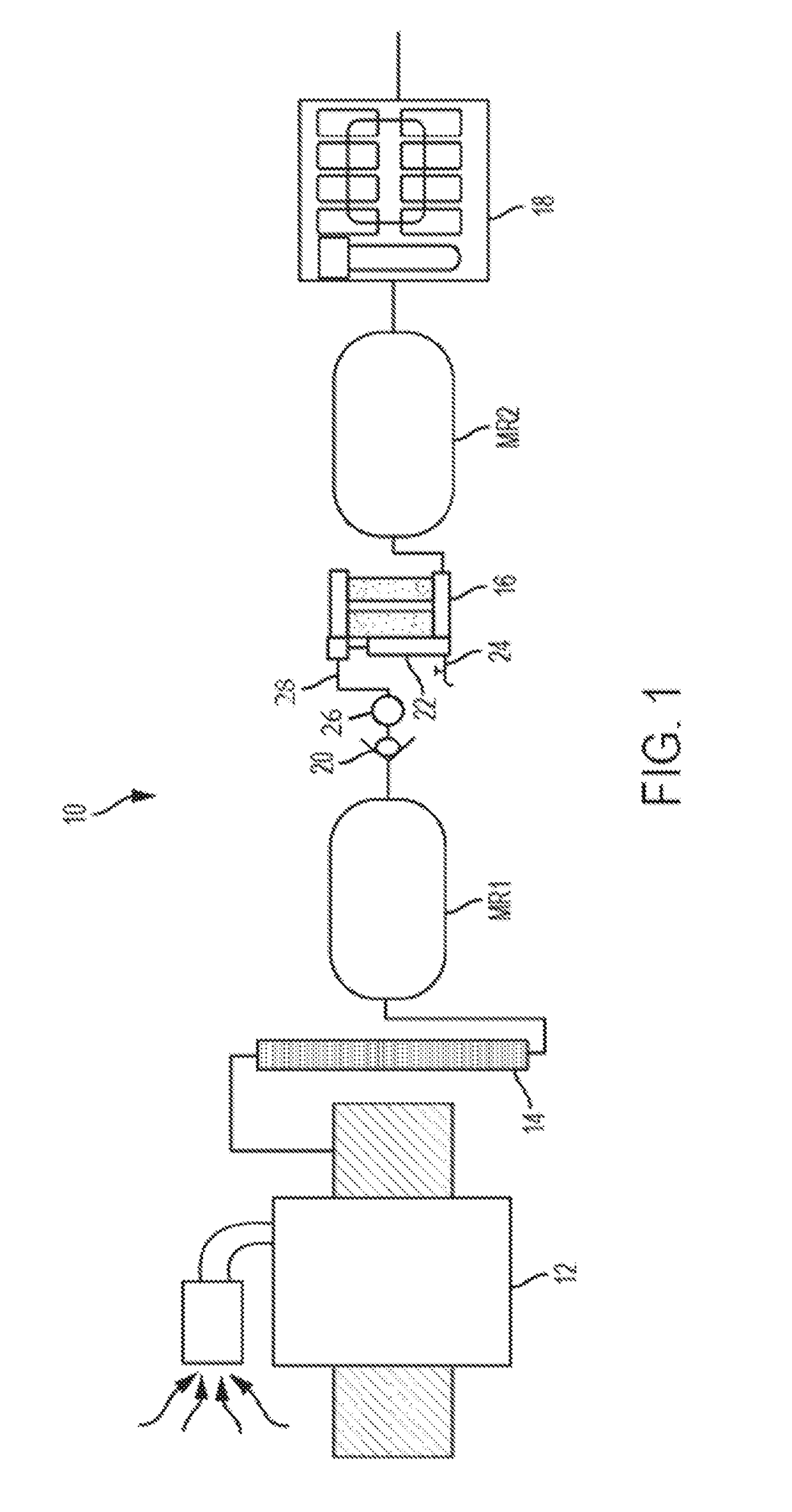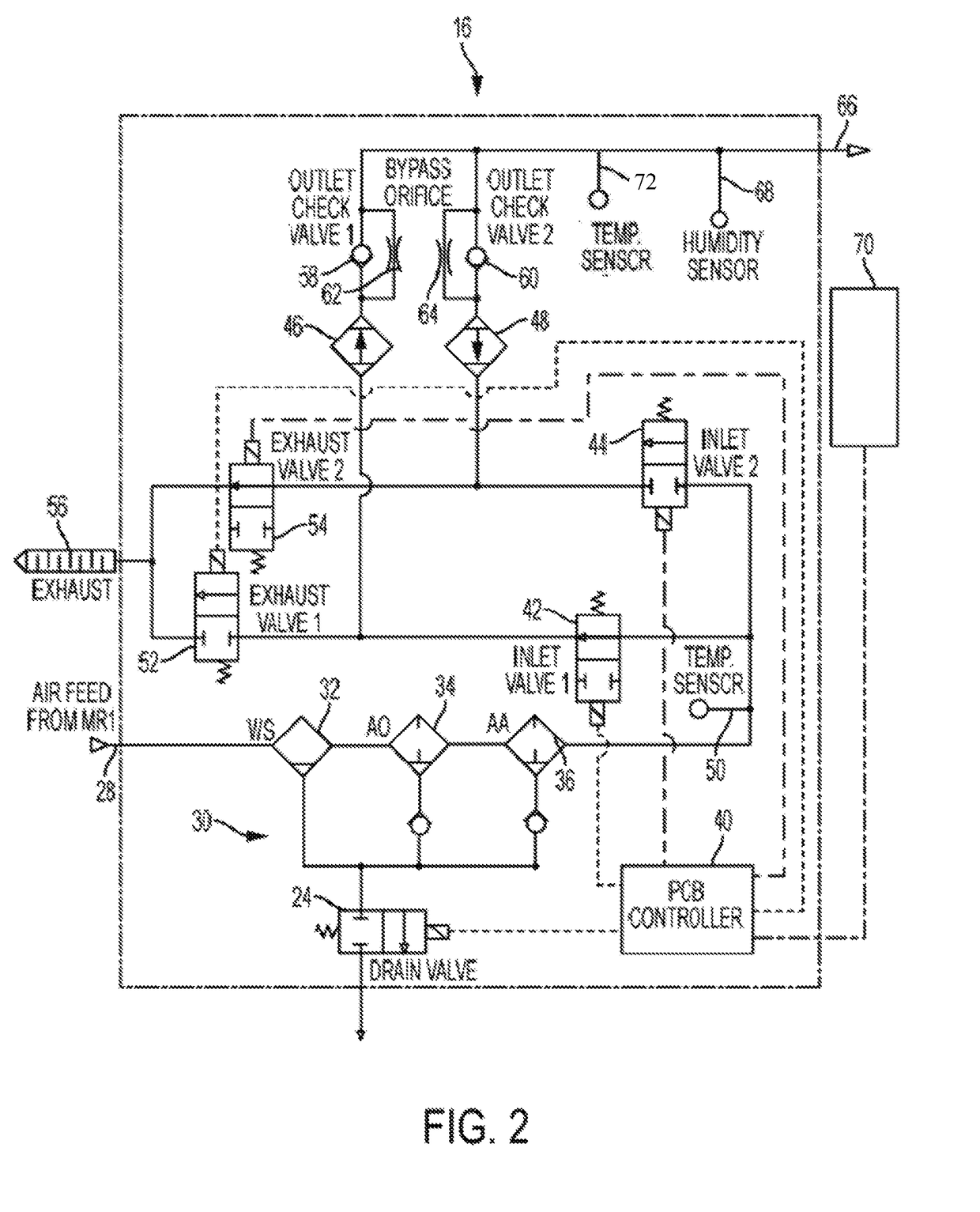Air dryer control using humidity
a technology of air dryer and humidity, which is applied in the direction of braking system, separation process, braking components, etc., can solve the problems of waste of dry product purge air consumed by the air dryer regeneration cycle, inefficient control scheme, waste of considerable energy, etc., and achieve the effect of achieving a minimum level of performan
- Summary
- Abstract
- Description
- Claims
- Application Information
AI Technical Summary
Benefits of technology
Problems solved by technology
Method used
Image
Examples
example 1
[0028]Referring to FIG. 5, the purge air savings of air dryer verses a conventional control scheme can be estimated using an environmental distribution profile of a target geographic area, such as the United States, representing the amount of time a given locomotive is exposed to environmental temperatures in a typical year. The comparison assumes a locomotive year of 8141 hours (95% of a calendar year), a compressor 12 that runs 1625 loaded hours in a locomotive year, and flow rate through air dryer 16 of 100 SCFM. Train leakage is assumed to be a continuous 20 SCFM. A conventional air dryer is modeled with a 65 second drying cycle and a 65 second regeneration cycle consisting of 48 seconds of purge and 17 seconds of re-pressurization and it is assumed that the conventional air dryer only cycles when the compressor is ON. Purge loss is conservatively assumed to be 15% (15 SCFM), which attempts to account for memory function and flow dependent purge volume.
[0029]Air dryer 16 accordi...
example 2
[0033]In a field trial, air dryer 16 was able to maintain a minimum 40° C. (72° F.) dew point depression, with more than 80% of the purge cycles occurring at the cycle maximum of an hour. In this case, a cycle is the cycle time for tower A and tower B in sequence. For comparison, the same cycle on a conventional air dryer is just under 2 minutes. Because air dryer 16 uses closed-loop humidity feedback to initiate the purge cycle, it accounts for both much lower moisture loading at low temperatures and for actual air flow through the dryer. The optimized purge provides both an energy and air savings by not “wasting” purge air, and importantly reduces the wear and tear on the air dryer components, extending the useful life of air dryer 16. For example, the test air dryer 16 operated for 3427 hours and in that time has made approximately 3000 purge cycles. Had air dryer 16 instead utilized the traditional 2-minute purge (1 minute A, 1 minute B), assuming memory mode operation where it ...
PUM
 Login to View More
Login to View More Abstract
Description
Claims
Application Information
 Login to View More
Login to View More - R&D
- Intellectual Property
- Life Sciences
- Materials
- Tech Scout
- Unparalleled Data Quality
- Higher Quality Content
- 60% Fewer Hallucinations
Browse by: Latest US Patents, China's latest patents, Technical Efficacy Thesaurus, Application Domain, Technology Topic, Popular Technical Reports.
© 2025 PatSnap. All rights reserved.Legal|Privacy policy|Modern Slavery Act Transparency Statement|Sitemap|About US| Contact US: help@patsnap.com



